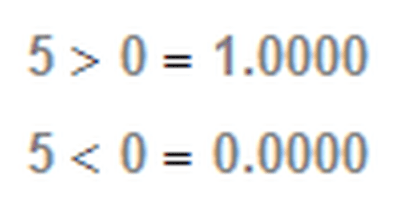In dealing with a Shear / Moment Diagram .. came across this expression ..
V(x) := R - (x > a) * W
never seen a ">" or "<" operator in an equality expression like this ..
How does this work ? does it multiply W only if x > a ??
else V := R if a >= x ?
if (x > a) is true (=1) then V = R-W
else if (x <= a) is false (=0) then V = R
is this the principle how this works ?
V(x) := R - (x > a) * W
never seen a ">" or "<" operator in an equality expression like this ..
How does this work ? does it multiply W only if x > a ??
else V := R if a >= x ?
if (x > a) is true (=1) then V = R-W
else if (x <= a) is false (=0) then V = R
is this the principle how this works ?

